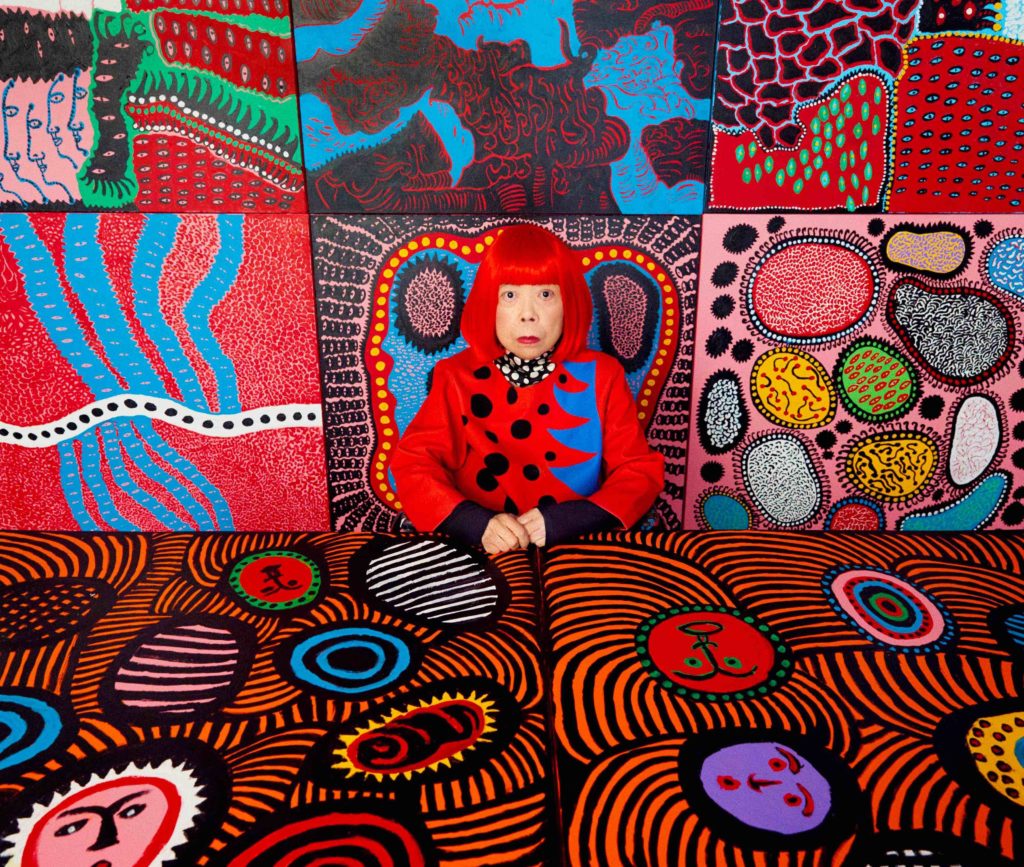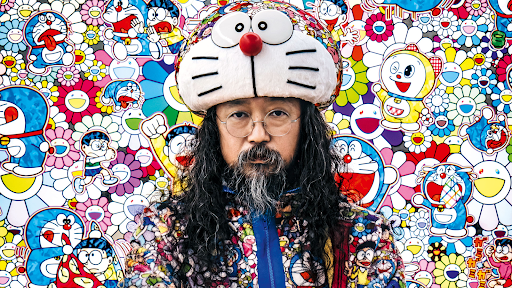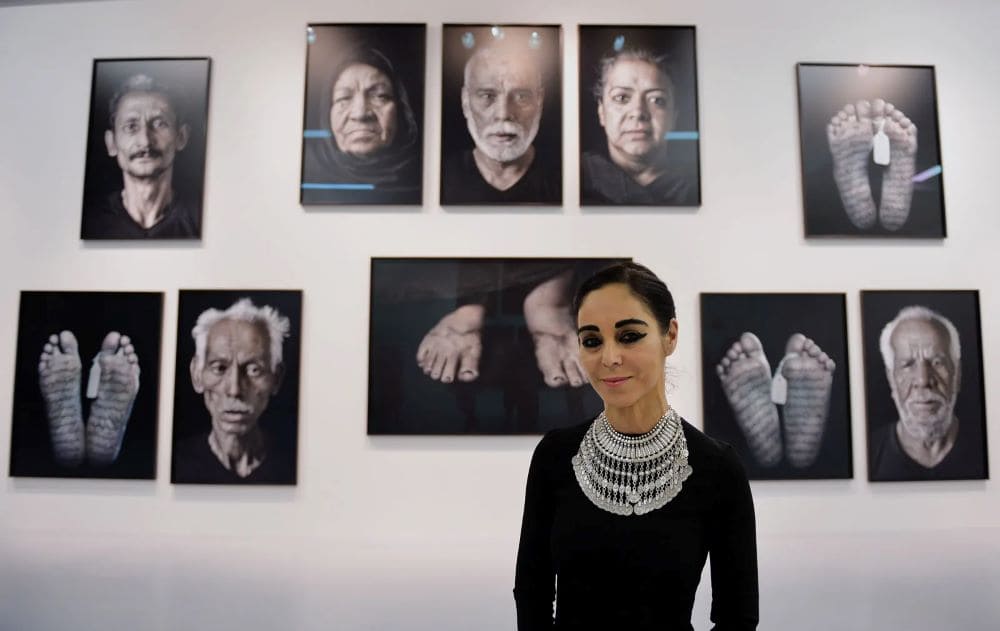
Contemporary art is a diverse and ever-evolving field, with many artists making significant contributions across different mediums and styles. Here’s a list of some of the most prominent and influential contemporary artists today, spanning different regions and practices:
1. Yayoi Kusama (Japan)
- Style: Installation art, sculpture, painting
- Notable for: Polka dots and infinity mirror rooms
- Themes: Infinity, obsession, mental illness
- Impact: Kusama has been a leading figure in avant-garde art for decades. Her immersive, dream-like spaces and motifs of repetition have earned her international acclaim.
2. Ai Weiwei (China)
- Style: Conceptual art, sculpture, activism
- Notable for: Powerful political statements, large-scale installations
- Themes: Human rights, freedom of expression, Chinese politics
- Impact: Ai Weiwei’s work is highly political, addressing urgent global issues. He often blends art and activism, making his works both visually striking and socially charged.
3. Kehinde Wiley (USA)
- Style: Portraiture
- Notable for: Grand portraits of Black subjects, often in classical European poses
- Themes: Race, identity, power
- Impact: Wiley rose to prominence for his vibrant, large-scale portraits of African Americans, reinterpreting classical European portraiture. He famously painted Barack Obama’s official presidential portrait.
4. Jenny Saville (UK)
- Style: Figurative painting
- Notable for: Large-scale paintings of fleshy, often distorted female bodies
- Themes: Body image, femininity, identity
- Impact: Saville’s raw, powerful depictions of the human form challenge traditional ideals of beauty and femininity, pushing boundaries in contemporary painting.
5. Olafur Eliasson (Iceland/Denmark)
- Style: Installation art, sculpture
- Notable for: Large-scale environmental installations
- Themes: Nature, climate change, perception
- Impact: Eliasson’s immersive, sensory installations, such as his iconic “The Weather Project” at the Tate Modern, engage viewers with questions about nature, light, and environmental sustainability.
6. Kara Walker (USA)
- Style: Installation, drawing, cut-paper silhouettes
- Notable for: Black silhouettes that depict scenes of racial tension, historical violence
- Themes: Race, slavery, power dynamics
- Impact: Walker is known for her stark, provocative explorations of race and history, particularly slavery in America. Her cut-paper silhouettes create complex, haunting visual narratives.
7. Takashi Murakami (Japan)
- Style: Superflat, contemporary pop art
- Notable for: Vibrant, cartoon-like characters, collaborations with fashion brands (e.g., Louis Vuitton)
- Themes: Consumerism, pop culture, Japanese identity
- Impact: Murakami blurs the boundaries between high and low art, merging Japanese traditional art forms with contemporary pop culture and commercialism.
8. El Anatsui (Ghana/Nigeria)
- Style: Sculpture, installation
- Notable for: Large, shimmering tapestries made from bottle caps and recycled materials
- Themes: Colonialism, waste, material culture
- Impact: Anatsui’s works are monumental in scale and rich in texture, reflecting on history, environment, and global consumption.
9. Cecily Brown (UK)
- Style: Abstract painting
- Notable for: Expressive, gestural brushstrokes blending figuration and abstraction
- Themes: Eroticism, the body, movement
- Impact: Brown’s dynamic and sensuous paintings engage with art historical traditions of abstract expressionism while exploring themes of sexuality and identity.
10. Zanele Muholi (South Africa)
- Style: Photography
- Notable for: Powerful portraits of Black LGBTQIA+ individuals
- Themes: Identity, race, sexuality, queerness
- Impact: Muholi’s work documents and celebrates Black queer communities, challenging erasure and offering an intimate, humanizing perspective on LGBTQIA+ experiences in South Africa and globally.
11. Toyin Ojih Odutola (Nigeria/USA)
- Style: Drawing, painting
- Notable for: Rich, detailed portraits of Black subjects
- Themes: Identity, race, socio-political issues
- Impact: Odutola’s intricate, textured portraits explore identity and history, challenging traditional representations of Black bodies in art.
12. Rashid Johnson (USA)
- Style: Mixed media, installation
- Notable for: Use of everyday materials, such as plants, books, and ceramic tiles, in his installations
- Themes: Race, identity, cultural history
- Impact: Johnson’s deeply symbolic and layered works investigate African American identity and cultural narratives, incorporating a wide range of materials and media.
13. Julie Mehretu (Ethiopia/USA)
- Style: Abstract painting, drawing
- Notable for: Large-scale abstract works that blend architecture, maps, and personal experience
- Themes: Migration, globalism, urban life
- Impact: Mehretu’s work combines abstraction with social commentary, creating vast, complex visual worlds that explore contemporary issues of displacement, space, and power.
14. Wolfgang Tillmans (Germany)
- Style: Photography
- Notable for: Eclectic range of subjects, from still life to intimate portraits to abstract forms
- Themes: Identity, politics, technology, everyday life
- Impact: Tillmans has redefined photography in contemporary art with his experimental and intimate approach to everyday subjects.
15. Njideka Akunyili Crosby (Nigeria/USA)
- Style: Mixed media, painting
- Notable for: Collage-like paintings that combine Nigerian and Western imagery
- Themes: Diaspora, identity, cross-cultural experiences
- Impact: Akunyili Crosby’s works explore the complexities of her Nigerian-American identity, blending personal, political, and cultural narratives.
These artists have had a profound influence on contemporary art by addressing social, political, and environmental issues, often challenging conventions and engaging with global audiences.





